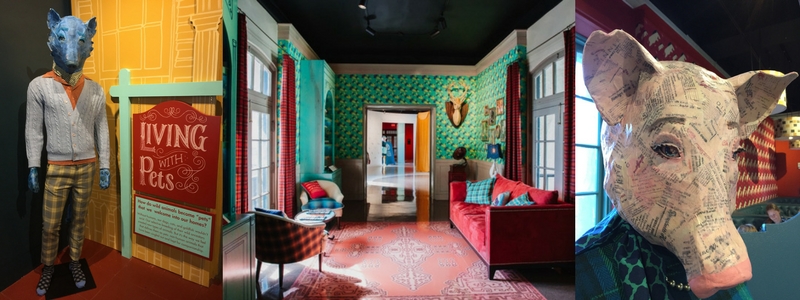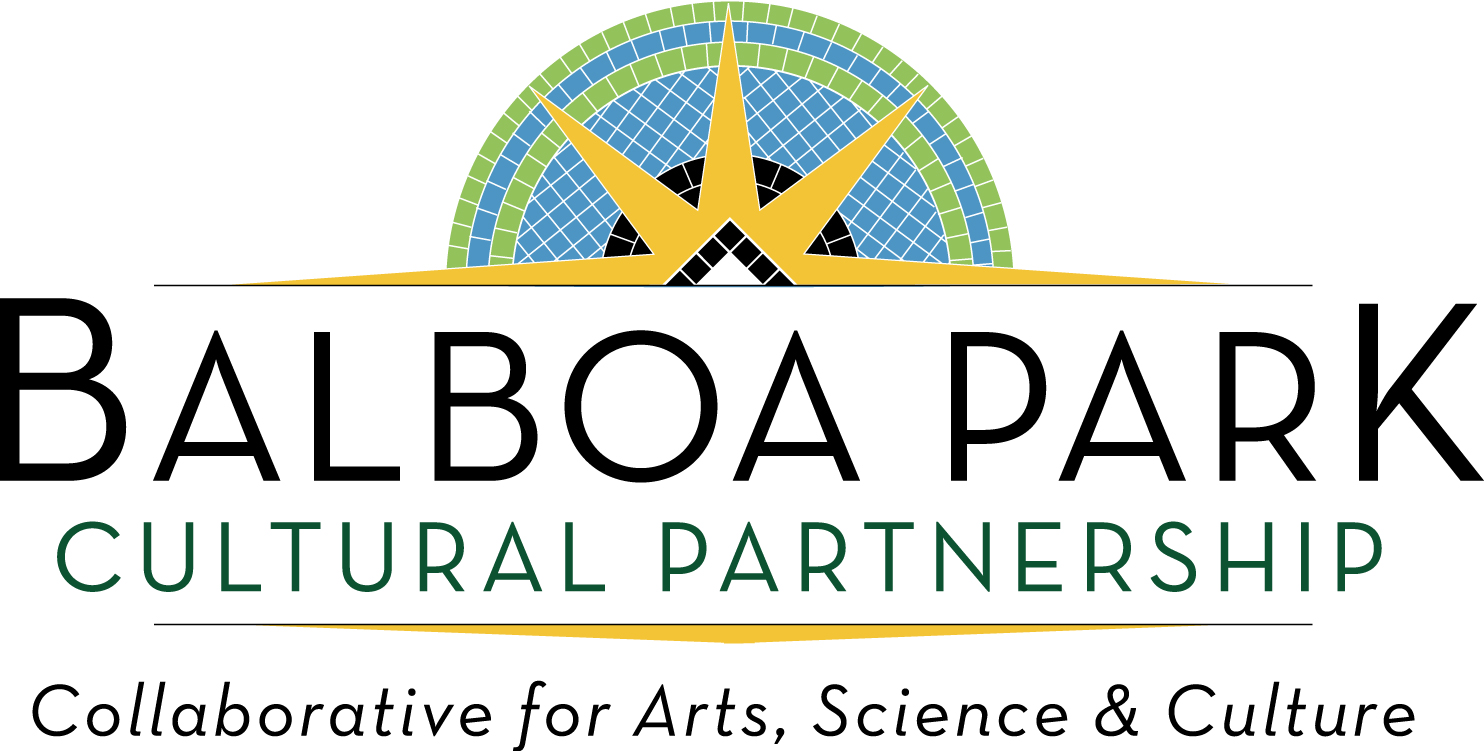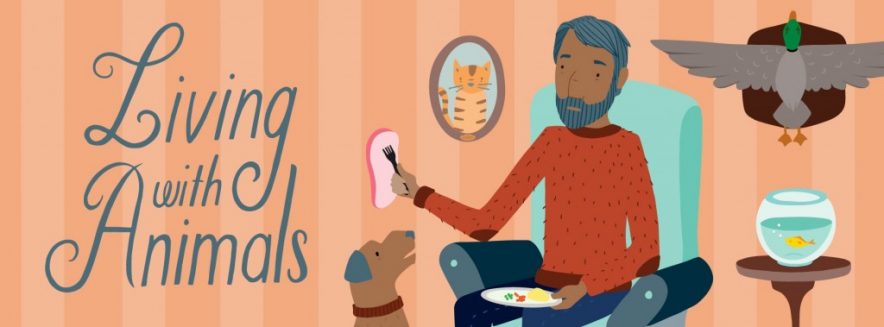Last year the San Diego Museum of Man achieved LEED Gold certification after implementing many sustainable measures and practices in their century-old building. In the process, sustainability became part of the culture at the San Diego Museum of Man and is top-of-mind when developing new programs, planning events or designing exhibits such as Living with Animals.
Living with Animals opened March 10th and is intended to run for the next three years. The overarching concept is a reflection on our relationships with animals throughout human history. The creative multi-room, multi-media exhibit begins the narrative with the first known human-animal relationship, between humans and wolves, and continues on to explore how human-animal relationships have evolved over time. As visitors guide themselves through the different areas, they are treated to wall paintings, hand-made sculptures, video displays, and more. Our favorite is the diner booths with menus projected on the tables from equipment mounted in the ceiling.
Visitors can’t help but notice how human relationships with animals have affected the natural environment. Living with Animals explores the interesting switch from pets to pests and invasive species over time. For example, rats are considered pests, but they’ve also become popular domesticated pets. The exhibit also raises the issue of how our dietary decisions and animal factory farming affect the environment, and examines alternative sustainable food sources like insects.
Sarah Crawford, Exhibit Developer at the San Diego Museum of Man, noted, “Messages about sustainability also tied in well with the content—an exhibit about animals naturally lends itself to discussing some of the ways humans affect and impact the natural world.”
Sustainability themes were not only embedded in the content, but also in the design and construction of the exhibit itself. Living with Animals was created in-house through a collaborative effort between the exhibits team, education, collections, operations, marketing, fabrication, development and design departments. Many sustainable measures incorporated resulted from input and discussion involving all of those departments.
Sustainable features can be seen in spatial and decorative elements throughout. At the entrance, visitors are greeted by a well-dressed sculpture of a humanized wolf. This is one of three paper mâché sculptures made from recycled newspaper and restaurant menus and outfitted with thrift store clothing. Most of the furniture and luggage throughout the exhibit came from thrift stores as well.
 Living Room Photo by Stacy Keck
Living Room Photo by Stacy Keck
Crawford commented, “We found that some of these initiatives, like using upcycled furniture, had the added benefit of being both attractive and cost effective.”
Just beyond the entrance, visitors find themselves in a space that feels like a living room. As part of construction of this area, two previously obstructed windows were exposed to allow natural light and air to flow through the gallery. Not only does this reduce the energy required for lighting, but also offers guests a unique view of the Cabrillo Bridge to the west.
Some of the exhibit signage is painted directly onto the walls, which helped reduce the use of wasteful signage materials. LED lights are used throughout for energy efficiency and for flexible, creative lighting schemes. For these sustainable elements, and others, the San Diego Museum of Man team reached out to local vendors as much as possible to further reduce their carbon footprint. The team also plans to reuse and repurpose some of the materials in future projects.
Crawford mentioned, “We built the exhibit with the intent to reuse and repurpose certain materials—this allowed us to incorporate a particular “handmade” aesthetic into our design with a level of intentionality that helped create a beautiful exhibit.”
Now, as you walk through Living with Animals, you can search for these discreet sustainability features that subtly enhance and beautify the experience. Visit soon for a surprising, unique and inspiring look into the history of our interactions and relationships with animals, and check out upcoming interactive animal programs planned to complement the exhibit!

